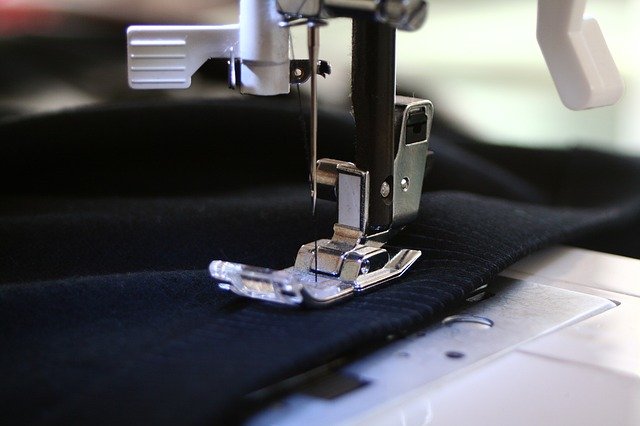When it comes to bringing your creative visions to life, having the right sewing machine can make all the difference. Sewing machines are versatile tools that cater to a range of projects, from simple repairs to intricate garment creations. With a multitude of options available in the market, choosing the perfect sewing machine requires thoughtful consideration of your specific needs and preferences. In this comprehensive guide, we will explore the key factors to keep in mind when selecting a sewing machine, ensuring that it aligns with your skill level, project requirements, and budget.
Factors to Consider When Choosing a Sewing Machine
Before delving into the intricacies of various sewing machine features, it’s essential to understand the fundamental factors that influence your choice. Here’s a list to guide you through the decision-making process:
- Type of Sewing Machine: Determine the type of sewing machine that suits your needs. Common types include mechanical, electronic, computerized, and embroidery machines.
- Purpose of Use: Consider your primary use for the sewing machine. Whether you’re a beginner focusing on basic stitching or an experienced sewist delving into intricate embroidery, the purpose will influence the features you require.
- Sewing Machine Features: Evaluate the features offered by different machines, such as built-in stitches, automatic buttonhole functions, adjustable speed controls, and needle threaders.
- Stitch Options: Assess the variety of stitches available. While basic machines may offer essential stitches, advanced models provide a broader selection, including decorative and specialty stitches.
- Ease of Use: Consider the user-friendliness of the machine, especially if you’re a beginner. Look for intuitive controls, clear markings, and easy threading mechanisms.
- Speed and Motor Power: The speed at which a sewing machine operates is a crucial factor. Additionally, motor power influences the machine’s ability to handle different fabrics. High-powered motors are preferable for heavy-duty projects.
- Size and Weight: Evaluate the size and weight of the sewing machine, especially if you have limited space. Portable and compact machines are ideal for those with small sewing spaces.
- Budget Constraints: Determine your budget for the sewing machine. While there are options available at various price points, it’s essential to find a balance between features and cost.
- Brand Reputation: Research the reputation of different sewing machine brands. Established brands often have a track record of producing reliable and durable machines.
- Warranty and Support: Check the warranty offered by the manufacturer and the availability of customer support. A good warranty provides peace of mind, and accessible customer support is beneficial in case of issues.
Comparative Analysis: Types of Sewing Machines
To assist you in making an informed decision, let’s compare different types of sewing machines based on key characteristics:
| Type of Sewing Machine | Advantages | Considerations | Ideal Use |
| Mechanical Sewing Machine | Simple, durable, less expensive | Limited stitch options, manual controls | Basic sewing tasks, beginners |
| Electronic Sewing Machine | More stitch options, electronic controls | May have a learning curve for beginners | Versatile sewing, moderate skill level |
| Computerized Sewing Machine | Extensive stitch options, programmable, precise | Higher costs may require technical knowledge | Advanced projects, precision sewing |
| Embroidery Machine | Specialized for embroidery, decorative stitching | Limited for general sewing tasks | Embroidery projects, embellishments |
Selecting the Right Type of Sewing Machine
Now, let’s delve into each type of sewing machine to help you determine which one aligns with your requirements:
- Mechanical Sewing Machine:
- Advantages: Simple to use, durable, cost-effective.
- Considerations: Limited stitch options, manual controls.
- Ideal Use: Basic sewing tasks, ideal for beginners or those on a budget.
- Electronic Sewing Machine:
- Advantages: More stitch options, and electronic controls for precision.
- Considerations: There may be a learning curve for beginners.
- Ideal Use: Versatile sewing, suitable for those with moderate sewing skills.
- Computerized Sewing Machine:
- Advantages: Extensive stitch options, programmable, precise.
- Considerations: Higher costs, may require technical knowledge.
- Ideal Use: Advanced projects, precision sewing, suitable for experienced sewists.
- Embroidery Machine:
- Advantages: Specialized for embroidery and decorative stitching.
- Considerations: Limited for general sewing tasks.
- Ideal Use: Embroidery projects, adding embellishments to garments.
Key Features to Look for in a Sewing Machine
Now that you’ve narrowed down the type of sewing machine, consider the specific features that will enhance your sewing experience:
- Built-In Stitches: A variety of built-in stitches allows you to explore different sewing techniques and decorative options.
- Buttonhole Function: Look for a sewing machine with an automatic buttonhole function for precise and easy buttonhole creation.
- Adjustable Stitch Length and Width: The ability to adjust stitch length and width provides versatility for different types of sewing.
- Automatic Needle Threader: An automatic needle threader simplifies the threading process, especially for those with visual challenges.
- Free Arm Capability: A free arm is essential for sewing cylindrical items like sleeves and pant legs.
- Adjustable Speed Control: Adjustable speed settings allow you to control the sewing pace, ideal for beginners or intricate projects.
- Drop Feed Dogs: Drop feed dogs enable free-motion quilting and embroidery.
- Presser Feet Options: Look for a machine with various presser feet, including a walking foot for quilting and a zipper foot for garment construction.
Maintaining Your Sewing Machine
Proper maintenance is key to ensuring the longevity and performance of your sewing machine. Here’s a checklist to keep your machine in top condition:
- Regular Cleaning: Clean your sewing machine after each project to remove lint, dust, and thread debris.
- Oil the Machine: Follow the manufacturer’s guidelines for oiling your machine to keep the moving parts lubricated.
- Replace Needles Regularly: Change the needle regularly, especially if you’re working with different fabrics.
- Check Tension Settings: Adjust the tension settings as needed to achieve even and balanced stitches.
- Protect Your Machine: When not in use, cover your sewing machine to prevent dust accumulation.
- Professional Servicing: Consider professional servicing, especially if you notice any issues with the machine’s performance.
Conclusion
Choosing the right sewing machine is a significant decision that hinges on understanding your specific needs, skill level, and budget constraints. Whether you opt for a mechanical, electronic, computerized, or embroidery machine, the key is to find a model that aligns with your projects and sewing aspirations. By considering the type of machine, evaluating key features, and prioritizing ease of use, you can make an informed decision that enhances your sewing experience. Remember, a well-chosen sewing machine is not just a tool; it’s a partner in your creative journey, helping you bring your sewing projects to life with precision and joy.




